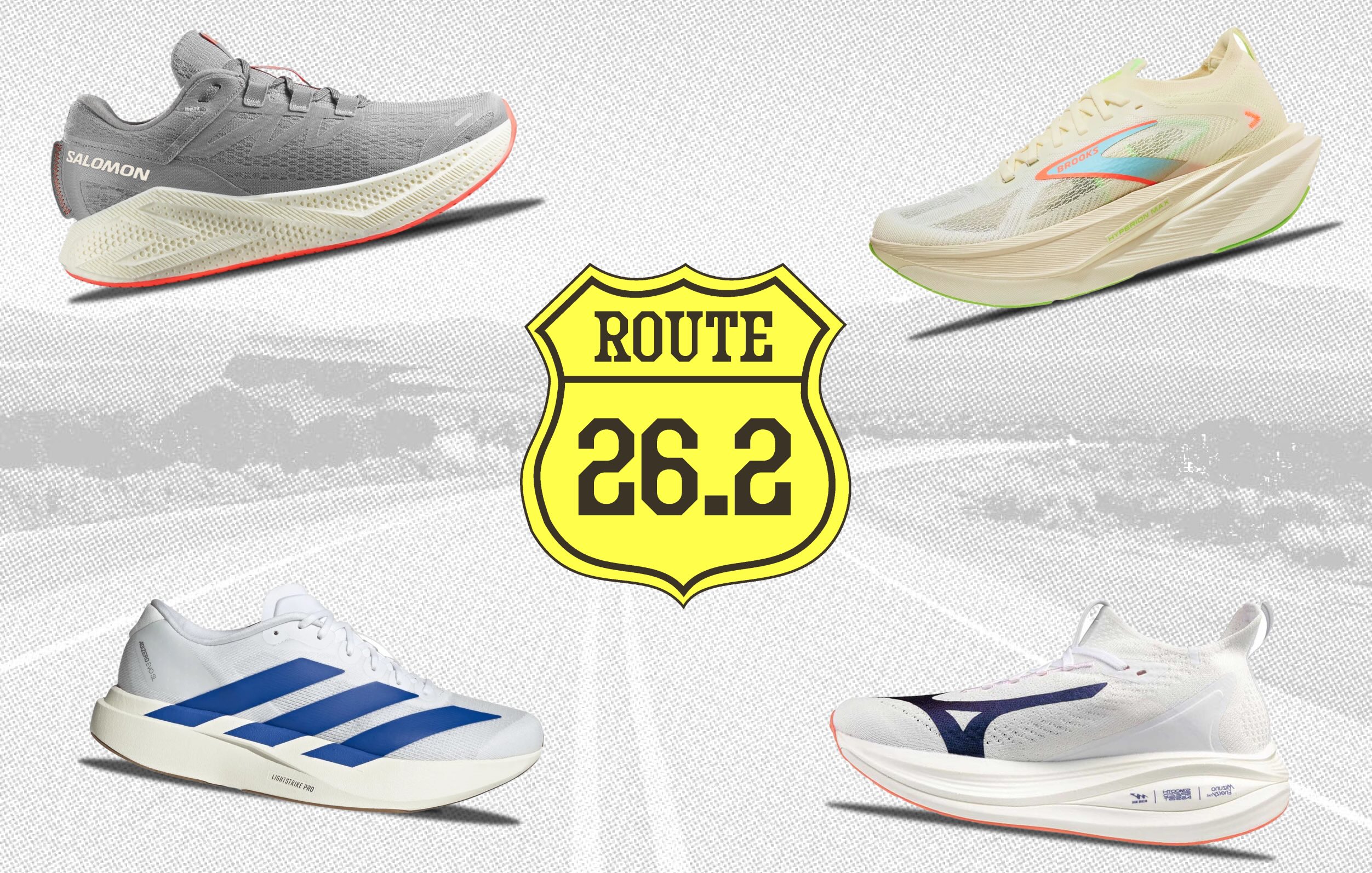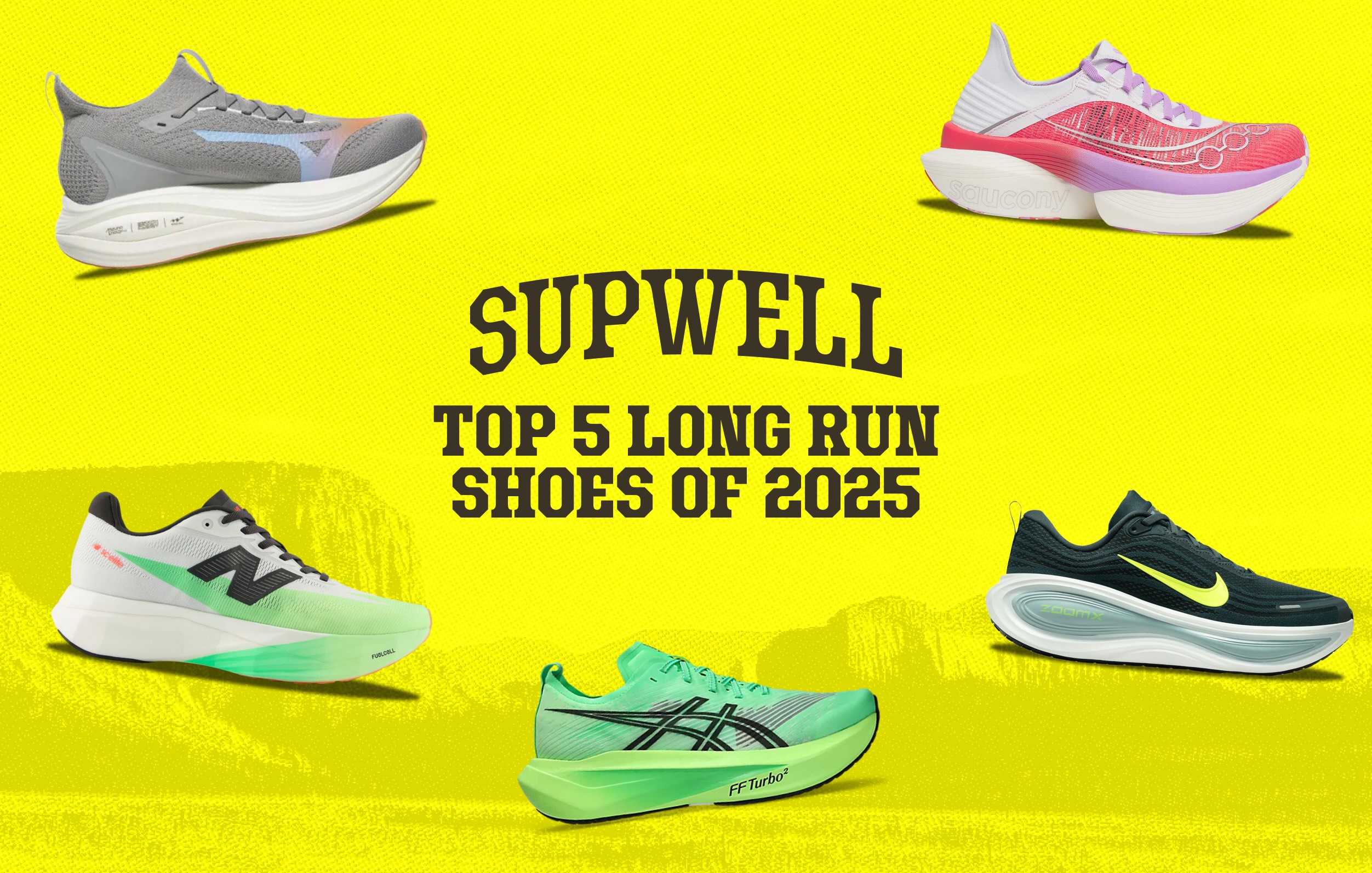10 Best Running Shoes for your First Marathon
No matter your time goals, if you're training for your first marathon, it’s important to have a thoughtful, well-rounded shoe rotation to support you through your daily miles, speed sessions and workouts, long runs, and race day. Below, we break down our favorite options in each category to help you find the ones that will work best for you.


There are four main categories of shoes to consider when building your marathon training rotation: daily trainers, speed session or workout shoes (which can often double as your race day option), long run shoes, and race day shoes. We’ll break down each category, explain the purpose of these types of runs, and recommend the best shoes to help you get the most out of every run.
For a full break-down of Yowana's 10 recommendations for first time marathon training, check out the video on the YouTube channel:
Daily Trainers
These are your do-it-all shoes—the ones you could theoretically use for any run. Daily trainers are usually the most comfortable shoes in your rotation. They don’t need to be the fastest or most aggressive, just reliable and pleasant to run in. When you’re training for a marathon—whether it’s your first or your twenty-first—the bulk of your miles will be easy, recovery, or Zone 2 runs. These are crucial for building aerobic endurance and helping your body adapt to more time on feet.
1. Nike Vomero 18 ($155)
One of the most comfortable options out there. It features ReactX foam on the bottom with a small layer of ZoomX (Nike’s race foam) on top. It’s not the most exciting or responsive shoe, but it offers plush cushioning and a well-padded upper, making it ideal for daily runs ranging from 30 minutes to an hour. It has great outsole rubber coverage and while it’s not especially lightweight, it delivers on comfort.
Nike Vomero 18

2. ASICS Novablast 5 ($150)
A lighter and more energetic alternative to the Vomero 18. Its geometry favors forefoot strikers, while runners with a more rolling stride might prefer the higher heel stack cushioning of the Vomero. It's one of the most popular daily trainers for good reason. The only downside is that the soft, bouncy foam in the forefoot may not feel as protective to everyone. But if you like a lightweight, peppy shoe that helps your legs turn over quickly, the Novablast 5 is a great option.
Asics Novablast 5

3. Salomon Aero Glide 3 ($160)
Probably our favorite daily trainer right now. It’s lightweight, bouncy, and well-cushioned, with a forgiving and comfortable upper. If you have narrow feet, consider going down half a size. One standout feature: the foam doesn’t fatigue, making it a strong long-run option too. Compared to the Vomero and Novablast, the Aero Glide 3 holds its bounce longer and resists feeling mushy. It's also light and responsive enough for strides or light tempo efforts.
Salomon Aero Glide 3
.png)
Speed Training / Workout Shoes
These are the shoes you’ll reach for during speed-focused sessions throughout your marathon training block. These workouts could include:
- Intervals – Short, fast bursts to improve running mechanics and efficiency.
- Strides – 10–20 second sprints typically done after easy runs.
- Tempo runs – A prescribed number of miles at your lactate threshold or half marathon pace.
- Marathon pace runs – Sustained miles at marathon pace, often during long runs.
1. Adidas EVO SL ($150)
A lightweight shoe made with 100% race foam. It doesn’t have a plate, which gives it a slightly less aggressive feel compared to a plated racer. While it’s fast, the geometry and upper aren’t the most comfortable for everyone.
Adidas Evo SL

2. Saucony Endorphin Speed 5 ($175)
A comfort-oriented speed trainer with a nylon plate, race foam on top, and a more stable, durable foam underneath. It’s a great option for smaller or less powerful runners. Whether you're doing tempo runs or want a lighter daily trainer, this shoe helps you lock into a nice rhythm and offers a smooth, enjoyable ride.
Saucony Endorphin Speed 5

Long Run Shoes
These are the shoes built to handle your longest efforts—whether it’s your weekly 2–3 hour long run or a midweek medium-long run. They’re designed for time on feet and must deliver on comfort, protection, and support over extended distances.
1. Puma MagMax Nitro ($180)
The MagMax walks the line between a daily trainer and a long run shoe. It’s not overly soft or mushy and has a nice bounce that improves as the run goes on. It provides some speed assistance, a wide and stable base, and plenty of protection. It’s heavier than a typical daily trainer, but the added weight is worth the comfort and stability it provides for longer runs.
2. Mizuno Neo Vista 2 ($200)
Probably the most slept-on shoe of 2025. It’s soft, bouncy, smooth, and very comfortable. While it’s lighter than the MagMax, it offers the same level of protection and comfort. With a high stack of foam stabilized by a plastic plate and dual-density midsole, it's perfect for marathon training long runs and recovery efforts alike.
Mizuno Neo Vista 2

Race Shoes
These are the shoes that you might consider for using on race day to provide you with the utmost in speed while also being comfortable enough to get you through 26.2 miles. They’re designed to be fast, efficient, and light, with most using carbon plates and race foams for speed assistance. Some people use them throughout their training block, while others save them for just a couple of key sessions and race day itself.
1. Brooks Hyperion Max 3 ($200)
This one packs in a ton of stack, bounce, and protection in a versatile package. It uses Brooks’ new DNA Gold race foam on top, a plastic plate, and a firmer base foam on the bottom. The well-executed rocker delivers a smooth ride and provides superior speed assistance. It is great for race day, long runs, and tempo sessions alike. A true “rotation killer.”
Brooks Hyperion Max 3

2. Puma Deviate Nitro Elite 3 ($230)
This is still our top pick in terms of value, comfort, price, and versatility. The foam hits the Goldilocks zone—not too firm, not too soft—and it's highly durable. Whether you're doing speed sessions, long runs, or at the start line, this shoe delivers. It also offers solid stability and excellent grip for all road conditions.
Puma Deviate Nitro Elite 3

3. Nike Alphafly 3 ($295)
The Nike Alphafly 3 is one of the most popular marathon day race shoes. It features ZoomX foam, forefoot air pods, and a wide, stable base. The cushioning and protection are top-tier, and while it’s aggressive, it’s also surprisingly accessible for a wide range of runners. Many hobby joggers find it fast, fun, and forgiving over the marathon distance.
Supwell Shoe Matcher
Whether you're looking for a reliable easy run shoe, pampering comfort on recovery days, a long-run cruiser, or a race day weapon, check out our Shoe Matcher tool to get matched. We've done the extensive testing, so you don't have to.
Find your next running shoe
Answer a few questions to find the best shoe based on your preferences and goals



